Note: Mike & Jennifer Wendland are members of LTV’s sponsored content team, The Leisure Explorers. Do you own a Leisure Travel Van and enjoy writing? Learn more about joining the team.
As RV journalists, we like to swap out RVs every year or two so our reporting can be based on first-hand experience with different brands, models and chassis. Over the past nine years, we’ve had five different RVs – including a Leisure Travel Vans Unity FX model – all built on the Mercedes-Benz Sprinter 3500 Cab Chassis. Sprinters are rugged, reliable, and make an excellent van or chassis when outfitted and used as an RV.
We truly have loved our Sprinters. We may get another some day.
But as we’ve covered the RV industry and interacted with our followers over the past couple of years, we couldn’t help but notice a lot of strong interest in the Ford Transit chassis by both manufacturers and everyday RVers. So when we heard about how LTV was adding lots of new options like a bigger inverter and heated lithium batteries on its Transit-based Wonder model, we ordered a Leisure Travel Vans Wonder Rear Twin Bed (Wonder RTB), built on the updated 178″ Ford Transit Cutaway Chassis. Technically, for insurance and titling purposes, it’s a Class C, though it is sometimes described as a Class B+ motorhome.
Jennifer and I bought our Wonder RTB on June 24, 2020, and ever since we drove it home from Holland Motor Homes in Holland, Michigan (our nearest LTV dealer), we have been pinching ourselves.
Yes, this really is ours!
Sometimes, between RV trips when it’s just parked in the driveway, you can find me in it, using it as a man cave, doing some work on my laptop, tinkering around with a project and, yes, sometimes even taking a nap in it.
In the driveway.
I just love being in it.

This Wonder has more of our most-wanted RV features than any other coach we have had. It is also a very sleek, easy-to-drive RV, and very comfortable. Let’s start with those rear twin beds.
After years of converting a sofa into a bed in our previous Class B motorhomes and, most recently, setting up and taking down a Murphy bed in our former LTV Unity FX model, the idea of having two dedicated beds in the rear of our unit all made up and ready was something we both really wanted. Those twins, by the way, can easily be pushed together into a queen. As twins, with some pillows propped up behind us, we can use the beds as sofas. If we put up the handy Lagun table between them, we have an office desk… or a dinner table.
We like small motorhomes precisely because they are small – meaning, maneuverable. But until now, with that small size there has been a liability.
All of our previous RVs just did not have enough storage space to bring along all the things we wanted. I’m talking a couple of bikes. Some gravity-style lounge chairs. An inflatable kayak. Fishing gear. Golf clubs. Cross country skis, poles, and snowshoes. And there’s all my photo and video gear, a remote podcast studio, my portable ham radio station, and assorted antennas.
On our previous Sprinter RVs, a lot of that stuff had to stay behind. There wasn’t room.
But our Wonder RTB solves our space issue with a huge pass-through storage area in the rear that we call the “garage.” It can hold a ton of cargo. I can even get a couple of bicycles in there. (The RTB model is the only LTV Wonder model that has the “garage”.)
And to take us to the remote spots where we could use all that gear, we ordered ours with all-wheel drive (AWD), an awesome option for those of us whose preferred camping style is boondocking as far as possible off the beaten path. AWD has really helped on those remote two-tracks we drive back in the boonies.
And in the wintertime up in Michigan, it has given us much more confidence. AWD applies torque to all four wheels. The advantage of quickly getting traction under slippery conditions gives us a lot of confidence to range far from developed campgrounds. Since AWD turns four wheels instead of just two, this means a much better grip. And when the road surface is frozen – such as when we’ve been on snow and ice –or made of loose sand – we’ve been able to accelerate better, with less or even no tire slippage.
Another benefit that we’ve discovered under all conditions is that AWD seems to accelerate better than 2-wheel drive, something we noticed on our very first drive home from the dealer, as I pulled onto the freeway.

The Ford Transit Cutaway Chassis
You no doubt have seen many of the Ford Transit vans on the street. They have become one of the best-selling utility vans in North America. RV manufacturers are also discovering them, buying the chassis, and then upfitting them with galleys, bathrooms, and sleeping quarters. The ones that use the traditional Transit van bodies are categorized as Class B RVs. The RV maker gets an empty panel van and customizes it, constrained by the existing panel walls of the van.
The Ford Transit chassis we have is what is known as a cutaway chassis. It consists of the Ford Transit engine and cab and the skeleton rails and wheels that make up the rest of the vehicle. There are no walls or panels built on. It’s shipped to the RV manufacturers as a cutaway chassis, and they then build the motorhome area as a separate box that they securely attach to the cutaway chassis.
RVs built on the cutaway chassis are officially designated by the industry as Class C RVs, though, as I noted above, you may hear some models like the Leisure Travel Vans Wonder referred to as a Class B+, because they are a bit sleeker looking and don’t have the traditional cabover bed section that sits atop the cab on the conventional Class C.
The Ford Transit Cutaway Chassis was recently upgraded. For one thing, the dash has been completely redesigned. There’s an awesome 8″ touchscreen that controls the entertainment system and Ford’s Sync3 navigation system. I use my Apple iPhone and the Apple CarPlay function built into the Ford entertainment system for podcasts and music as well as some of my favorite apps, like Waze for up-to-date traffic information.
The redesigned dash is impressive, as is the ability of both the front and passenger seats on the Wonder to fully swivel around. In previous Transit models, only the passenger seat could swivel. Now both do.
Notable safety and security features include an anti-theft system with engine immobilization, a lane-keeping system, pre-collision assist with automatic braking, tire pressure monitoring system, side wind stabilization, electric power-assist steering, auto start-stop technology, and a 10-speed automatic transmission.
But what does this mean in real use?
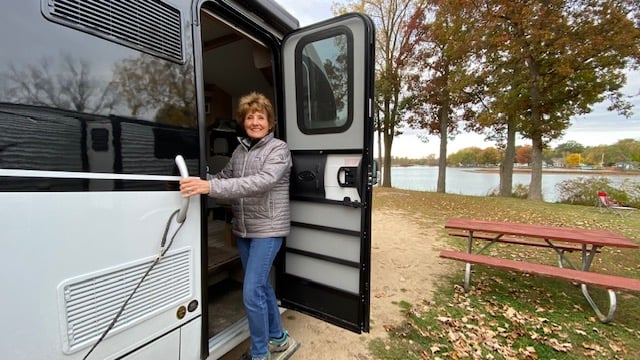
Handling and Road Noise
Jennifer and I think it just may be the easiest RV we have ever driven; quiet, stable, and so comfortable to operate it feels like you are in a high-end SUV. That was the first thing we noticed with our new Wonder: how quiet and smooth it was to ride in. All of our previous Sprinter RVs rode much rougher. Some were better, and some, like the 4WD we had a few years ago, were worse. All of the Sprinters had more of a truck-like ride. The Wonder feels more like a car or SUV. Not completely, but mostly.
Our Sprinters were so noisy that sometimes we could hardly record useable audio for our on-camera video shots as we were driving down the road at highway speed. There was a lot of wind and road noise. Maybe because the Transit is not quite so high as the Sprinter, we find it considerably quieter. We are able to more easily carry on a conversation, especially when videoing. Don’t get me wrong – the Sprinter is generally comfortable and pleasant to drive. But I’d be less than honest if I didn’t point out the cab noise.
Parts and Service
It’s no secret that Mercedes Benz and Sprinter maintenance is expensive; parts and service cost more. One reason is that all Sprinter parts are made in Germany. True, they’re now building the Sprinter in the US, but most of their parts come from a long way away and are at premium costs.
Another issue is service centers. There just are not that many places where Sprinters can be serviced. Many Mercedes dealers flat out refuse to service the Sprinter. Sprinter repair facilities can be hard to find. On a couple of occasions over the years, we’ve had to drive several hundred miles out of our way to get the necessary service on the road for our Sprinters.
I’ve found that parts and labor are less expensive on the Transit. With Ford, there’s a dealer in just about every town. And while not all Ford dealers service the Transit, there are still many more Transit service shops than Sprinter service shops.
Fuel Efficiency, Power, and Towing
The Wonder runs on gasoline, while all of our previous Sprinters were diesel. Since gas is now considerably cheaper than diesel, that’s been a plus. And gas is more widely available than diesel. On some of the back roads we’ve driven, there were more than a few times in our Sprinters when all we passed were stations selling gas. But on the other hand, on the Wonder, I’m only getting about 12.7 miles per gallon (mpg). On the Sprinter-based and diesel-fueled Unity, I got 15 mpg. On some of the Sprinter B vans we had before (all diesel), I got as much as 18 mpg.
As mentioned above where we talked about AWD, the Transit is quick off the stop; at least quick when compared to the diesel Sprinter. True, the Sprinter has more sheer pulling power, but it can feel ponderous when taking off from a dead stop.
The Transit lets me quickly accelerate and merge into heavy interstate traffic (sometimes a bit of a challenge for the Sprinter). And at stoplights, it would never bring frustrated honks from the line of vehicles behind.
Our Transit has a turbocharged 3.5-liter V-6 engine that generates 310 horsepower and 410 ft-lb of torque with a 10-speed automatic transmission. A Car and Driver review of the Transit van tested a Transit engine like ours doing 0 to 60 mpg in 6.8 seconds. A 2019 Sprinter engine like we had did the same 0 to 60 in around 11 seconds.
Both the Sprinter Unity and the Transit Wonder models have an 11,000-pound gross vehicle weight rating (GVWR). The Unity could tow 5,000 pounds. We can only tow ~2,000 pounds with our Wonder RTB model. Other Transit LTV Wonder floor plans can tow 3,000 pounds. The Wonder RTB is less because of the way the rear garage is designed. I think the peppier acceleration makes up for the lower towing capacity, but this depends if you like to tow.
Interior Design and Floor Plan
Back inside the motorhome, our Wonder has a dry shower, a must-have on our list of desired features. The self-contained, stand-up dry shower in our Wonder can accommodate someone 6’2″ tall. It even has a sunroof to let in lots of natural light. The RV comes with the Truma Aqua Go instant hot water heater, which means water is always hot and you don’t waste any water by having to leave it running to warm up.
I love boondocking deep in the wilderness and being able to take a hot luxurious shower. Turn the shower on, and it’s instantly warm. And because the shower is totally separate from the rest of the RV, there’s nothing that needs to be toweled off and dried. (Except you, of course.) The “wet” showers on the Class B RVs we used to have always required more time to dry the bathroom afterwards than it took to shower.
Even though our Wonder is just shy of 25 feet long, it really has two separate living areas. The door on the shower has a double function. It can be used to seal the bedroom area at the rear of the coach from the front galley and lounge area.
I’m an early riser – I get up about 5:30 am. Jennifer (and Bo) like to sleep till around 7 am. I can block off the back and make my morning coffee, read, work, and putz around the front of the RV without disturbing them.
Video Reviews
We’ve done a very extensive video review of our Wonder RTB, which you can see here:
And if that is not enough, we even did a Part 2 of the review here:
Our Top 10 Favorite Things About the Wonder
We sat down the other day and made a list of the various options and features we most like on our Wonder:
- The stowaway picnic table. It attaches to the side of the RV, then folds up and fits inside the “garage” when not in use.
- The two 100-amp lithium batteries, with built-in heaters. Lithium batteries charge fuller, faster, weigh less, discharge deeper, and greatly extend our off-the-grid capabilities.
- The 400 watts of solar panels. These help top off my batteries when we are boondocking.
- The 2,000-watt inverter. The only thing we can’t operate off the batteries is the air conditioner, but we also have a generator that will let us do that when far off the grid.
- The touchscreen Firefly control center. All of the controls we need are right at our fingertips.
- The massive inside storage under the beds. There’s space for Jennifer and me to bring hang-up clothing and lots more.
- The large bathroom. It has a fan, a window, a medicine cabinet, and lots of room. Right across from it is a roomy dedicated dry shower.
- The rooftop Winegard ConnecT 2.0 Wifi Extender and 4G LTE antenna. It brings in WiFi signals from a wide area and allows me to set up an Internet hot spot inside the coach.
- Being prewired for satellite TV. If I add a satellite dome dish to the roof, there are no holes to drill. If I use a portable dish, there’s an outside connection.
- The heater to warm the lithium batteries in cold weather. This is such a great addition for those of us who like to camp all year round.
So there you go. Now you know why we love our Wonder. If you see us out there on the road, we’ll be glad to give you a tour.
Happy Trails!
Note: The views expressed in this post are those of the authors and do not necessarily reflect those of Triple E Recreational Vehicles.


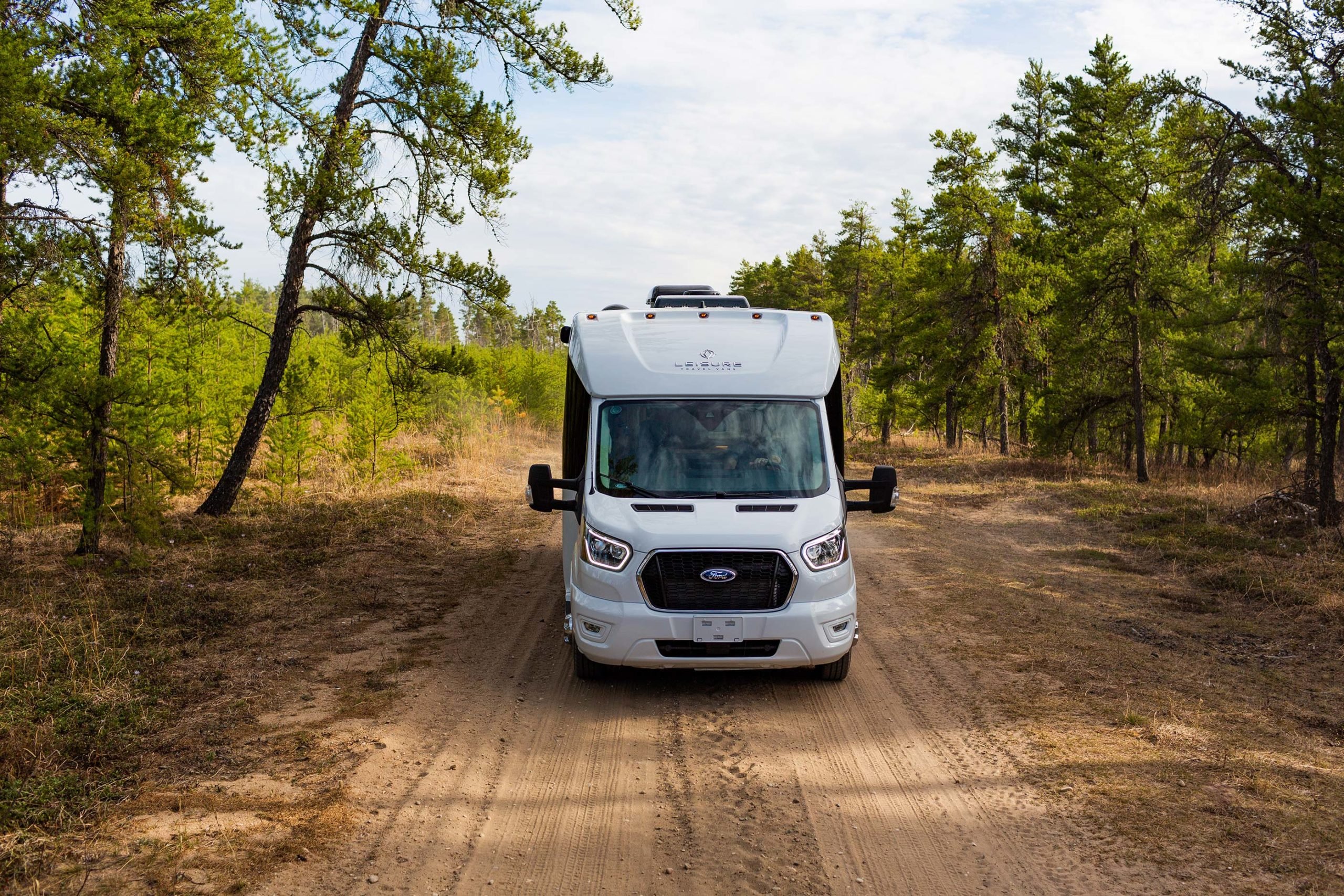

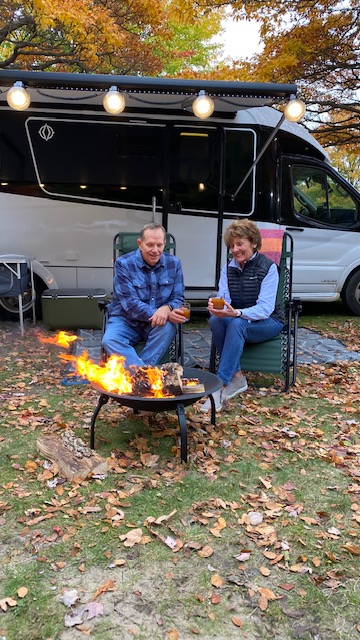
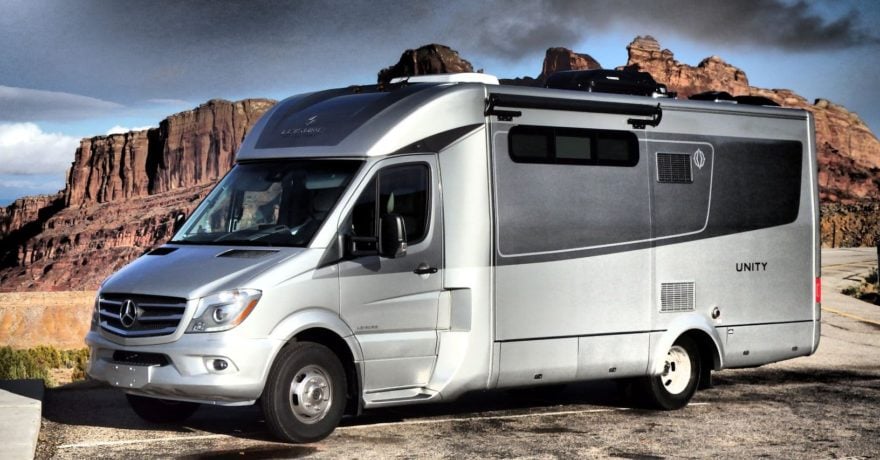

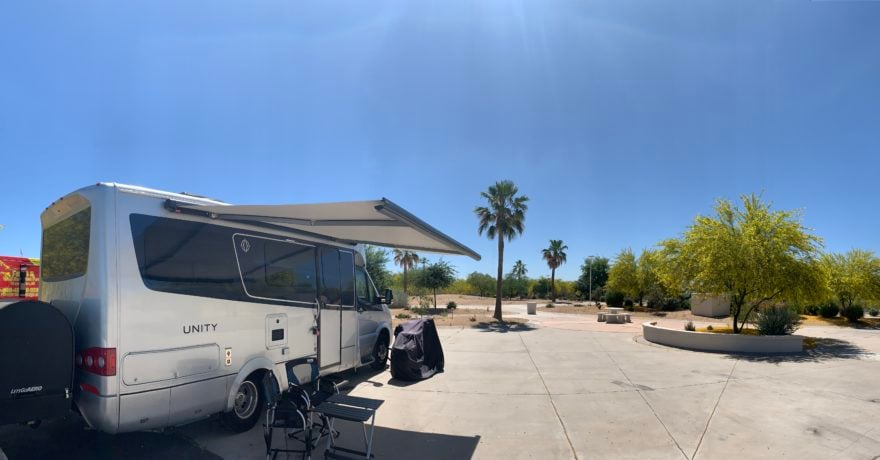
Comments